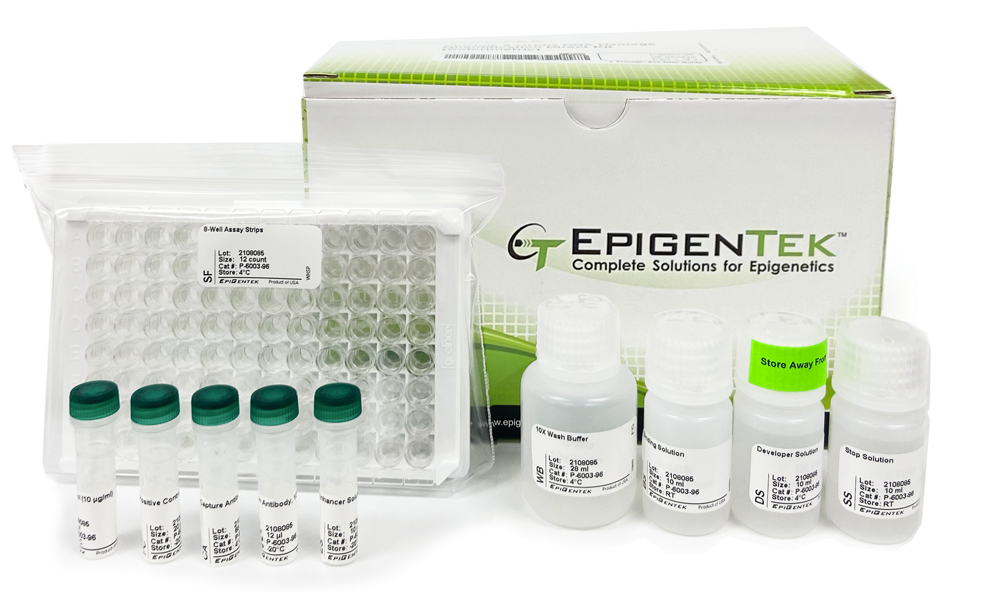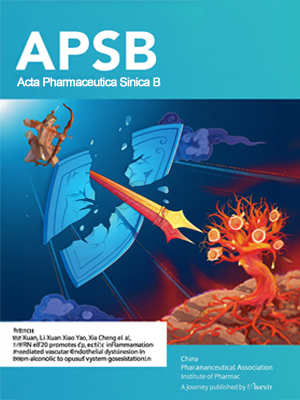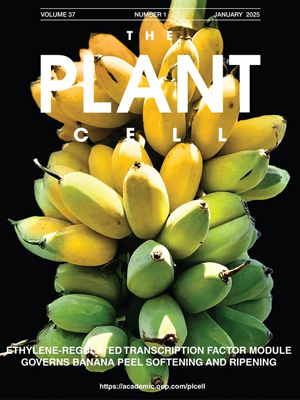

EpiQuik™ 8-OHdG DNA Damage Quantification Direct Kit
A fast, accurate, and reliable solution for quantifying oxidative DNA damage (8-OHdG)—trusted worldwide and supported by numerous citations.
High-Performance 8-OHdG Measurement Across Sample Types


This ELISA-style kit detects and quantifies oxidative DNA damage (8-OHdG) directly from DNA in under 4 hours.
- Fast & simple: Complete workflow in ~3 h 45 min.
- Convenient: Directly detects 8-OHdG from intact DNA—no digestion or hydrolysis required.
- High sensitivity & specificity: Detects as little as 2 pg 8-OHdG with no cross-reactivity.
- Reliable & accurate: Includes optimized controls; results comparable to gold standard HPLC.
- Flexible & universal: Strip-well format; suitable for 8-OHdG quantitation from any species.
- Proven & trusted: Highly cited in over 60 peer-reviewed studies.
Whether you’re analyzing a few samples or scaling up, the EpiQuik™ kit delivers consistent, dependable results with minimal hands-on time.
Featured in the World’s Leading Scientific Journals:
Our EpiQuik™ 8-OHdG DNA Damage Quantification Direct Kit is trusted by leading researchers and highly cited in top-tier publications with high impact factors.

Impact Factor: 17.7
Kang Y et al. (May 2022). Design of a two-dimensional interplanar heterojunction for catalytic cancer therapy. Nat Commun.

Impact Factor: 14.3
Li X et al. (Dec 2023). Non-canonical STING-PERK pathway-dependent epigenetic regulation of vascular endothelial dysfunction via integrating IRF3 and NF-κB in inflammatory response. Acta Pharm Sin B.

Impact Factor: 12.1
Chatterjee D et al. (Nov 2024). Maize unstable factor for orange1 encodes a nuclear protein that affects redox accumulation during kernel development. Plant Cell.

Impact Factor: 11.9
Toriumi et al. (Jun 2021). Combined glyoxalase 1 dysfunction and vitamin B6 deficiency in a schizophrenia model system causes mitochondrial dysfunction in the prefrontal cortex. Redox Biol.
Get Ready For Fast & Simple DNA Damage Quantification
View Product DetailsFrequently Asked Questions about the EpiQuik™ 8-OHdG DNA Damage Quantification Direct Kit
What is 8-OHdG and why is it a reliable marker of oxidative DNA damage?
8-hydroxy-2′-deoxyguanosine (8-OHdG, or 8-oxo-dG) is an oxidized form of deoxyguanosine generated by reactive oxygen species. Because it forms directly in DNA and is mutagenic, its abundance is widely used as a quantitative biomarker of oxidative DNA damage and oxidative stress.
How does the EpiQuik™ 8-OHdG Direct Kit work?
DNA binds to specially treated strip-wells and 8-OHdG is detected using capture and detection antibodies. The signal is enhanced and read colorimetrically at ~450 nm. Measured OD is proportional to the sample’s 8-OHdG content.
What samples and how much input DNA do I need?
Use purified genomic DNA from any species (cells, tissues, FFPE, etc.). Recommended input is 100–300 ng DNA per reaction (about 300 ng optimal). DNA can be in water or TE buffer.
How long does the protocol take?
Approximately 3 h 45 min from start to finish.
What is the assay’s limit of detection and specificity?
The kit detects as little as 2 pg 8-OHdG with high specificity and no cross-reactivity to 8-OHdG analogues.
Do I need to digest or hydrolyze DNA?
No. This is a direct assay that measures 8-OHdG in intact DNA—no digestion, hydrolysis, or single-strand conversion needed.
What controls are included and how are results reported?
Universal positive and negative controls are included. Use the standard curve to calculate absolute 8-OHdG and report as pg 8-OHdG per µg DNA (or convert to 8-OHdG per 106 dG).
How do results compare with HPLC or LC-MS?
Measurements correlate strongly with HPLC/LC-MS while using a simpler microplate workflow.
Can I measure 8-OHdG directly in urine or serum?
This kit is designed for DNA inputs. For biofluids, use an assay intended for free 8-OHdG in fluids, or isolate DNA and run this kit.
How many samples fit on one plate and is it automation-friendly?
The 96-well strip-well format supports flexible layouts and high throughput; it’s compatible with plate washers and liquid handlers.
What equipment do I need?
Standard ELISA tools: pipettes, plate washer (or manual washes), and a microplate reader at approximately 450 nm.
How should I store reagents and prepared samples?
Store components as indicated on labels. Keep DNA cold, avoid repeated freeze–thaw cycles, and protect light-sensitive reagents during handling.




 Cart (0)
Cart (0)







